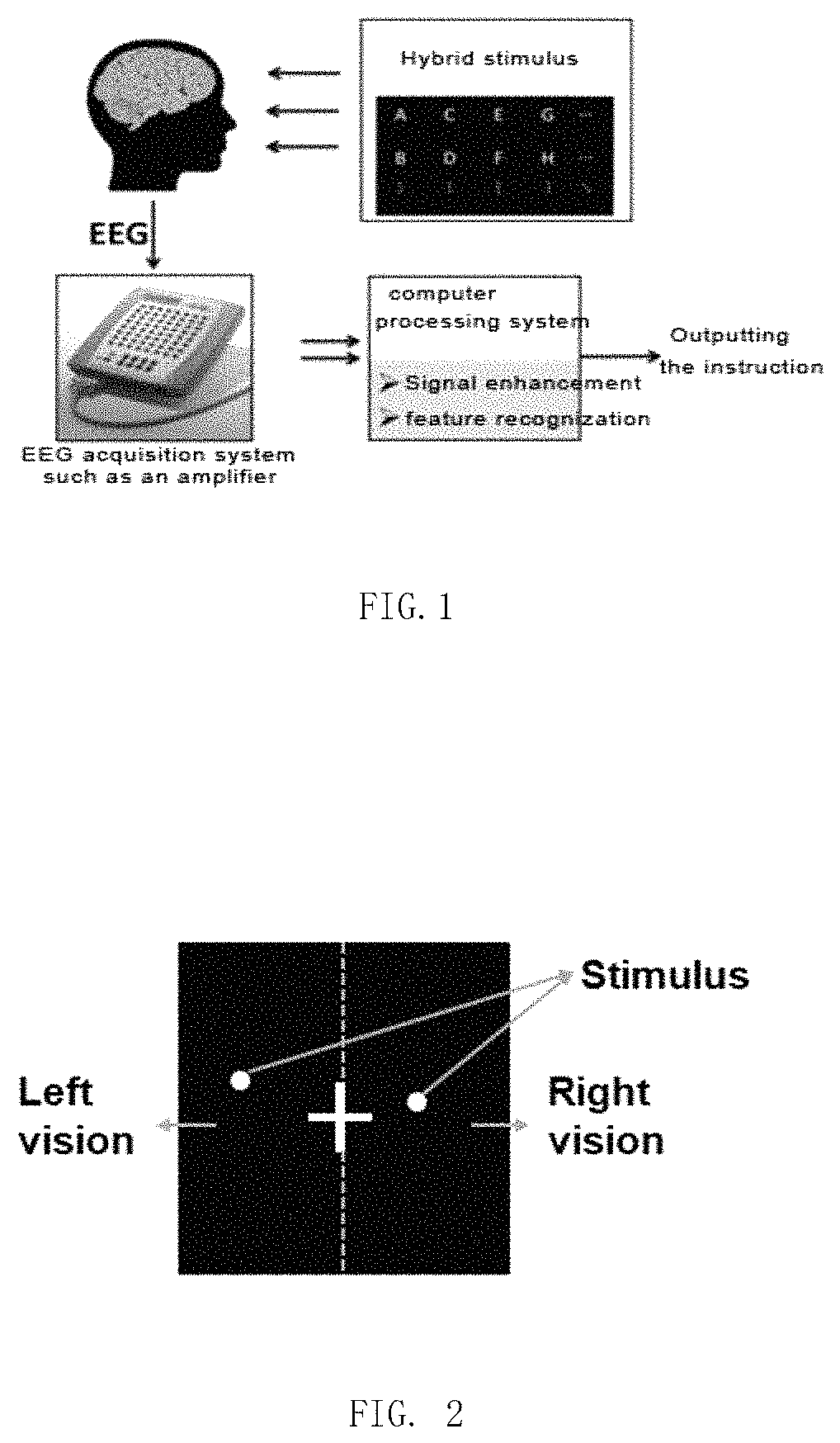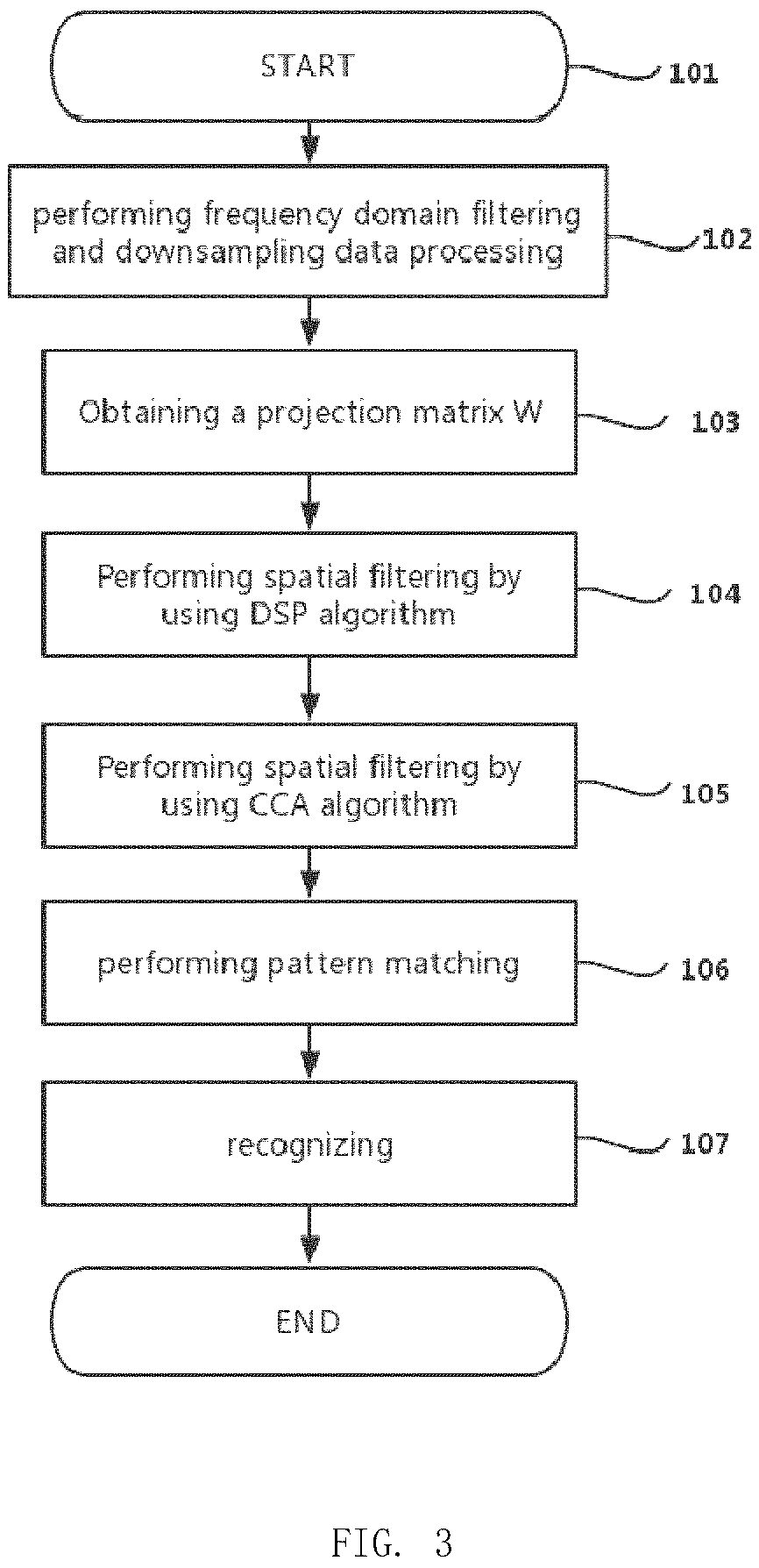Asymmetric EEG-based coding and decoding method for brain-computer interfaces
a braincomputer interface and coding technology, applied in the field of braincomputer interfaces, can solve the problems of limiting the further development and application of bcis, reducing the performance of cognitive resources, and high intensity and occupation of cognitive resources, so as to promote the application of bcis, improve bcis technology, and achieve social and economic benefits. considerable
- Summary
- Abstract
- Description
- Claims
- Application Information
AI Technical Summary
Benefits of technology
Problems solved by technology
Method used
Image
Examples
Embodiment Construction
[0037]The invention will be described in detail below with reference to the drawings in conjunction with the embodiments. The embodiments of the present invention are intended to understand the present invention and are not intended to limit the invention.
[0038]Brain lateralization is an important field in cognitive neuroscience. Due to the lateral effects of brain structure and function, asymmetry exists in different stimuli evoked EEG features, such as visual stimuli evoked asymmetric visual evoked potential, which reflects the asymmetry of neuronal activity between the two hemispheres of the brain.
[0039]The present invention provides an asymmetric EEG-based evoking method for BCIs, and use the spatial contralateral domination to hybrid code the SDMA coding, CDMA coding, FDMA coding and phase division multiple access coding, effectively expanding the number of system instruction sets, which is expected to obtain considerable social and economic benefits. The present invention can ...
PUM
 Login to View More
Login to View More Abstract
Description
Claims
Application Information
 Login to View More
Login to View More - R&D
- Intellectual Property
- Life Sciences
- Materials
- Tech Scout
- Unparalleled Data Quality
- Higher Quality Content
- 60% Fewer Hallucinations
Browse by: Latest US Patents, China's latest patents, Technical Efficacy Thesaurus, Application Domain, Technology Topic, Popular Technical Reports.
© 2025 PatSnap. All rights reserved.Legal|Privacy policy|Modern Slavery Act Transparency Statement|Sitemap|About US| Contact US: help@patsnap.com


